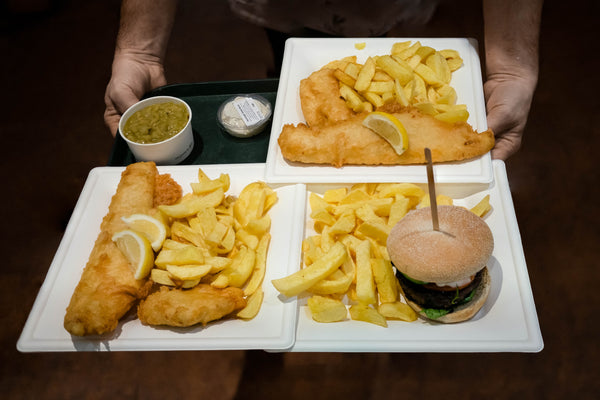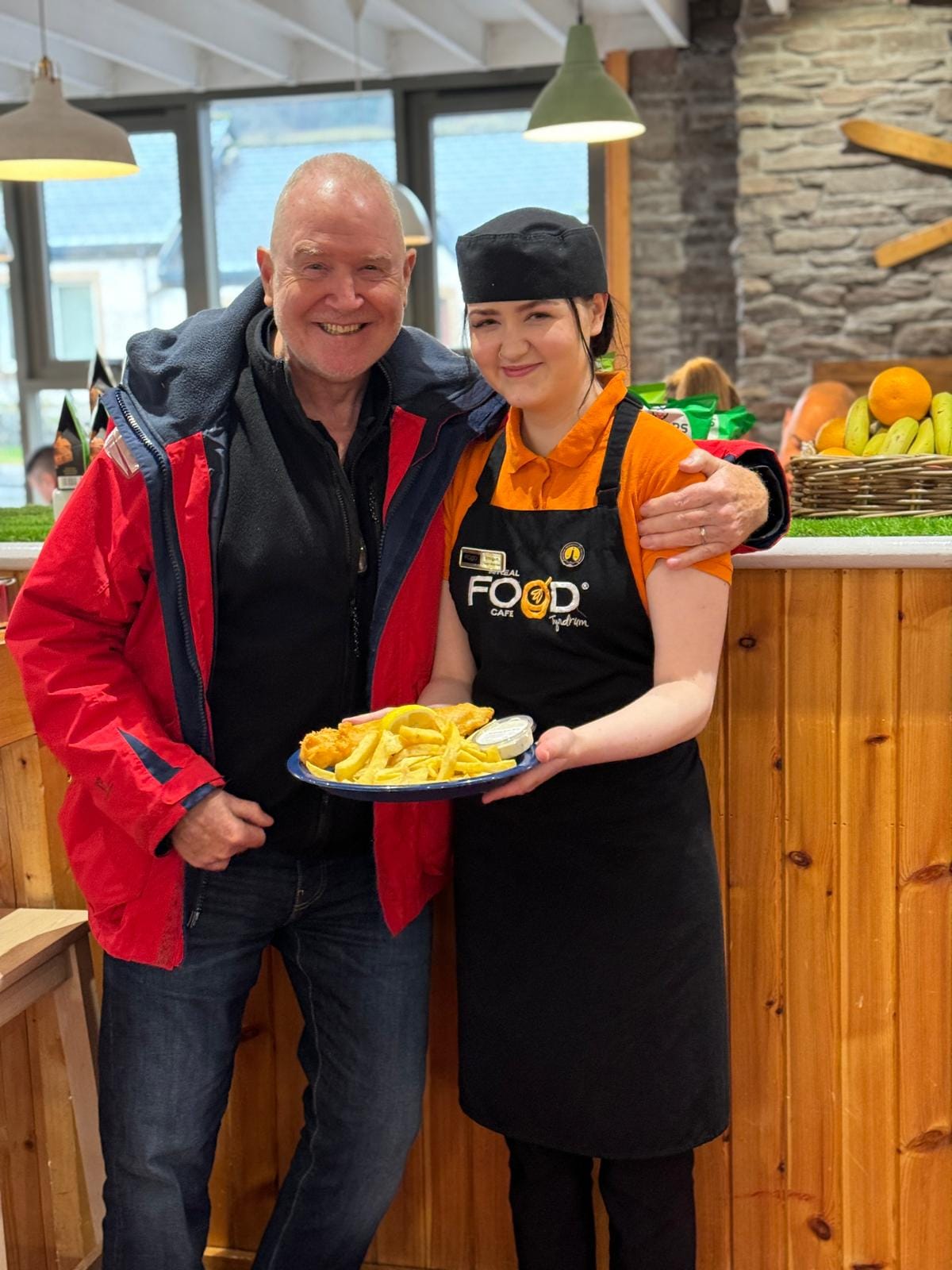
Behind the Scenes of The Real Food Cafe's Chips Preparation from Start to Finish
This is the third and final post in our series about The Real Food Cafe's chips. In which we're focusing on what it takes to turn a humble spud into fried chips in a hospitality environment.
This series was inspired by our recent success of becoming the only Scottish finalist in The Field to Frier category in The National Fish & Chips Awards of the official trade body, The National Federation of Fisheries & Friers. The Field to Frier category is all about making great chips and in this series we're revealing some of our secrets to making the best chips in Scotland.
Our previous two posts were about our team Frying and Test Tasting a new chipping potato variety called Babylon and the introduction of our head chipologist, Vaido. We're ending this trilogy during a National Chip week and a few days before the National Fish & Chips Awards ceremony. Do wish us success next week.
There is something special about chips, a guilty pleasure for some, a staple food item for others, a perfect comfort food, and a source of fond memories. In the UK, everyone loves chips and everyone has their favourite chip shop. Chips are simply a topic of conversation that can last for hours. Just think about the numerous ways you can cut, prepare or eat your chips.
Do you like chunky chips, triple cooked chips, French fries, or curly fries? Do you season your chips with vinegar, dip them in ketchup or mayonnaise, do you like them as a side or do you like them on their own maybe with a curry sauce? For a dish that comes from something so simple yet so versatile (the humble potato), chips certainly involve a lot of decision-making and stir some strong emotions.

Once one decides the kind of chips to prepare, it might seem that a consistent preparation of golden crispy chips in a commercial environment is a breeze but you could not be further from the truth. Our team has years of experience and a great amount of knowledge when it comes to the preparation of chips. In our almost twenty years in business, we dare to say we know all of the ins and outs of good chip making.
But what exactly do we do? Let's break down the process of chip preparation step by step.
Selection of Best Quality Frying Potatoes
- Selecting the perfect chipping potato variety.
- Potato Shape
- Potato quality
- Potato sugar level
- Percentage of Dry Matter

Turning Potatoes into Chips
2. Testing for Sugar Levels
First, our master chipologists take a sample test of the potato sugar levels from each of the bags they are going to use. If the sugar levels are in check, the potatoes are washed and peeled.
3. Potato Rumbling
We have a machine that essentially peels and cleans our potatoes, it’s called a potato rumbler, also known as a commercial potato peeler. The process takes about a minute and it’s fascinating to watch.

4. Potato Quality Check
We then quality check every single potato for any black spots and other quality issues.
5. Potato Chipping
Chipping the potatoes With the help of another useful machine, the potato chipper, the peeled potatoes are cut into chips which only takes a few seconds. We fill a dedicated 25 Gallon Chip Bin at a time.

6. Rinsing
We then thoroughly rinse the chips to remove starch.

7. Adding Drywite
Once we rinse the cut chips, we cover them in a solution of Drywite & water. We keep them submerged for 15 minutes.
Drywite is a preservative that helps keep our chips dry and prevents oxidation which leads to discoloration in fresh cut chips and peeled potatoes. It also means that the chips are dry when frying which improves the frying time and results in less oil absorption. It’s been used by chip shops around the UK since 1933 and it enables chippies to achieve the perfect chip all year around & reduce wastage.
The Drywite chemical compound evaporates in contact with heat, so you don’t have to worry about ingesting it.
As explained earlier in the article, we look for the percentage of dry matter in the potato to be around 20-22%. However, this changes throughout the year and the use of Drywite helps us manage the different levels and produce consistently delicious chips that are crispy on the outside but soft on the inside.
The solution is then drained and the chips are left to rest & dry for at least 1 hour.
Then the chips are ready for frying and transferred to the kitchen.
Chips Frying
All our chips are freshly made to order. We double fry them.
8. Chips Blanching
The first step is to blanch them, this is done by frying them at around 160°C. The time just depends on the batch size but is usually 7 and a half mins.
9. Chips Resting
Afterwards, the chips need to rest for a brief period, about five mins before they are fried again in hot oil (185 °C) for around 1.5 to 2 mins.
The finished chip must have consistent colour and no browning. There is no one shade of yellow that’s considered best. It depends on the actual colour of the potato variety. Some potatoes can be more yellow and others are lighter and almost white.
The cooked chips should not be too dry, nor too wet (this is all to do with the correct ratio of dry matter to water mentioned earlier). In basic terms, chips that are done well should be fluffy on the inside and crispy on the outside.

That’s all there is to making The Real Food Cafe potato chips. Come have a taste if you haven’t already. We are open every day from 7.30am until 8pm and 9pm in the summer.

